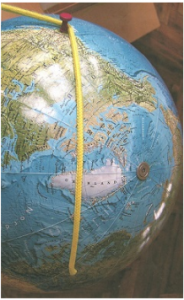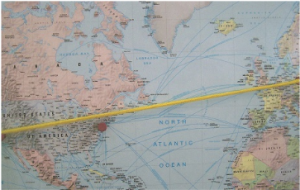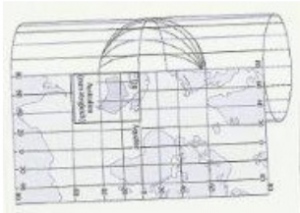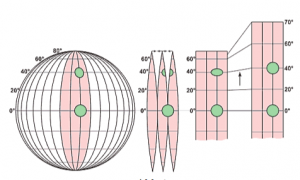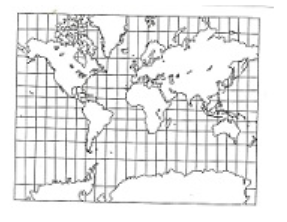Shortest distance on the globe
In January 2011, Lufthansa reported that one of its Boeing 747 aircraft had aborted its flight to San Francisco over Greenland due to oil loss in one of the four engines and had returned to Frankfurt am Main.
Looking at a map of the world, one wonders in amazement what the Boeing 747 is “doing” on a direct flight Frankfurt am Main — San Francisco over Greenland. If, on the other hand, you look at a globe, it immediately becomes clear that the shortest route from Frankfurt am Main to San Francisco is precisely across Greenland (cf. Figure 1) and not — as a world map (cf. Figure 2) suggests — “passing” New York at a distance of about 100 miles north.
An experiment in ADVENTURE LAND MATHEMATICS makes this clear by comparing distances on the globe and a world map, as the following illustrations show:


